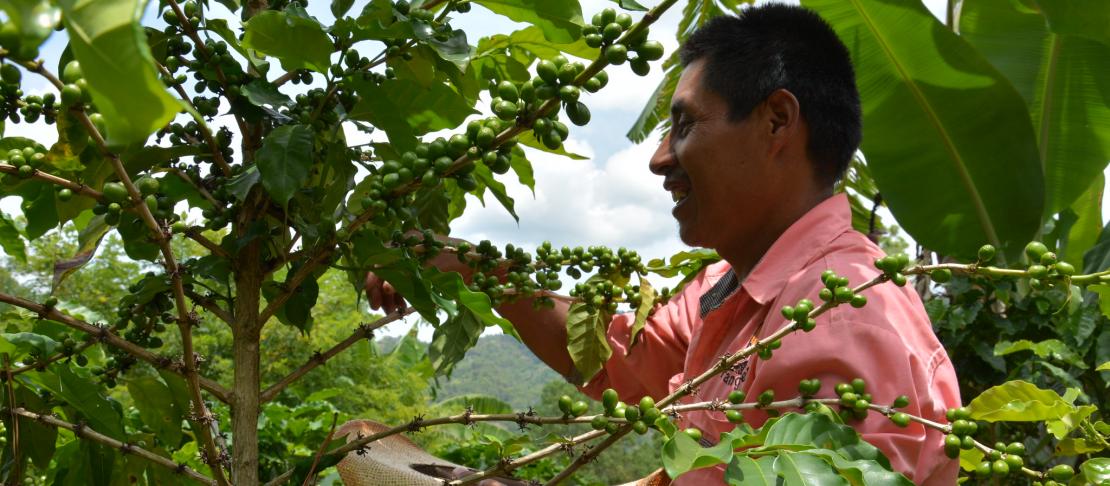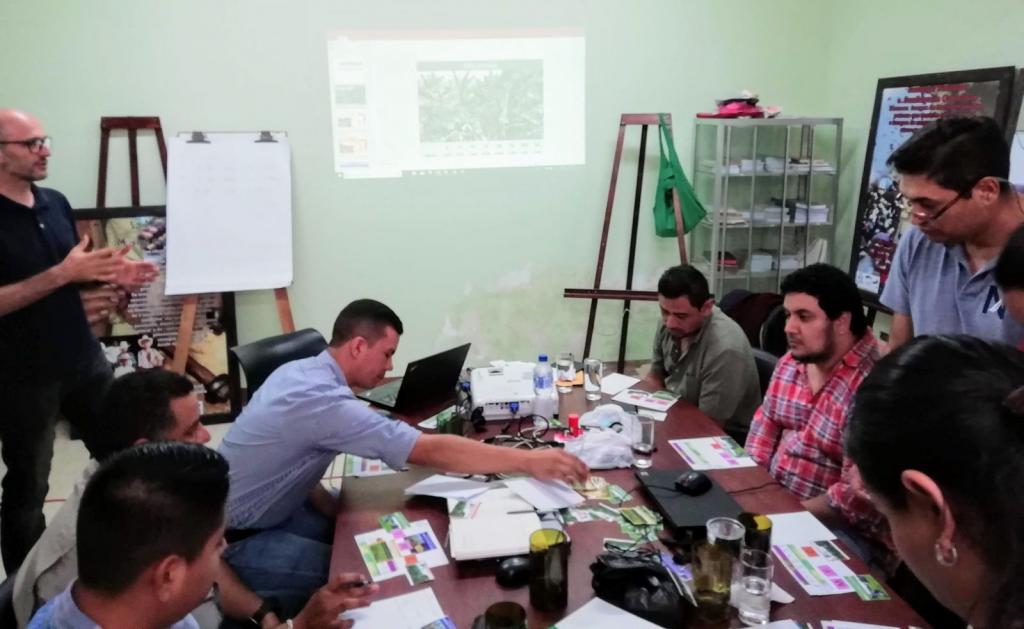Playing to achieve sustainable agriculture

Farmers in Guatemala and Honduras learn about the different benefits of implementing climate-smart agriculture practices through an economic game.
Playing. That's how farmers from the Olopa and Santa Rita Climate-Smart Villages (CSVs) in Guatemala and Honduras, respectively, were able to learn about the adoption of climate-smart agriculture (CSA) options. They did so as part of the project 'Generating evidence on gender-sensitive climate-smart agriculture to inform policy in Nicaragua and Guatemala', which is part of the CGIAR Research Program on Climate Change, Agriculture and Food Security (CCAFS) and funded by the International Development Research Center (IDRC).
Part of this project was the development of an economic game that helped to understand the decision-making processes of producers in relation to the adoption of CSA options in a climate change context. The aim of the game was to develop a useful tool to analyze and potentially influence farmers' perceptions and decision-making process process related to the implementation of climate change adaptation options. It also aimed to generate awareness about gender inequalities in the context of climate change adaptation.
The starting point for this game was a first version developed by the International Center for Tropical Agriculture (CIAT). This version was then adapted to suit the specific conditions of the two CSV that are coordinated through our partners, Comisión de Acción Social Menonita (CASM) and Asociación Regional Campesina Ch'orti' (ASORECH), in Honduras and Guatemala.
 Games are an interesting tool to complement traditional learning methods in several ways. First, learning is promoted through the experience that the players gain while playing the game. In addition, the context of the game creates a safe learning environment to test alternative decisions. Photo: F. Howland (CIAT)
Games are an interesting tool to complement traditional learning methods in several ways. First, learning is promoted through the experience that the players gain while playing the game. In addition, the context of the game creates a safe learning environment to test alternative decisions. Photo: F. Howland (CIAT)
How does this game work?
In its initial version, the game proposed players to make decisions about their farms, which grew crops of basic grains and coffee. In the face of different climatic scenarios, participants had to make the decision to invest in CSA practices or continue with conventional practices. After several rounds, these decisions determined which farms had the best results in terms of economic income, food security, biodiversity and greenhouse gas emissions. These indicators are based on the three CSA pillars that are required for sustainable agriculture: productivity, resilience and mitigation.
During the workshop, several changes were made to the design of the game based on the experiences and input of the participants. These changes focussed on three aspects: the organization of the players, the rules of the game and the game pieces.
In terms of player organization, it was proposed to organize game sessions where women, men and young people, play separately to be able allow for the comparison of responses from these different player groups.
Regarding the changes in the rules of the game, it was suggested to organize a bank system with tickets for the purchase of the practices so that the players would have greater awareness of the costs and benefits of the different agricultural practices. Furthermore, it was decided that the PICSA methodology would be used to communicate a climate scenario in each round using a bag with beads of different colors representing the probability of occurrence of a climate phenomenon (in this case, El Niño/La Niña).
Finally, the files and materials were modified to be more understandable, introducing more images, replacing the numbers with drawings and giving more information about the potential of practices in scenarios of La Niña or El Niño, for example.
It is the objective to incorporate these changes to the game, and to introduce it to the the producers of the CSV in Guatamala in August of this year.
Read more:
- News update: Gender, climate change and agriculture: Guatemala leads regional dialogue
- News update: Designing gender-sensitive and climate-smart technologies: a must for the future of Guatemalan agriculture
Fanny Howland is a researcher for the Internacional Center of Tropical Agriculture (CIAT). Lauren Sarruf Romero is the Communications Officer for CCAFS Latin America.



